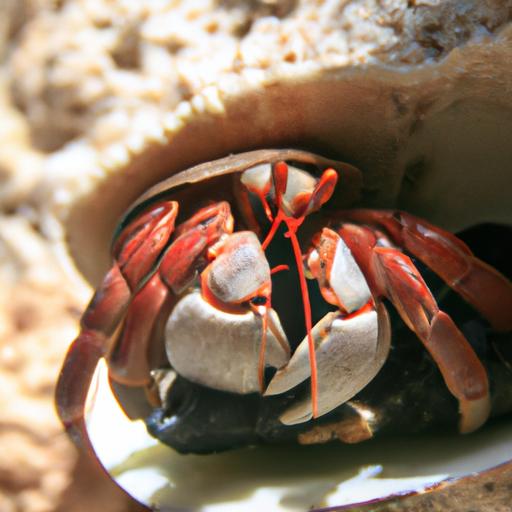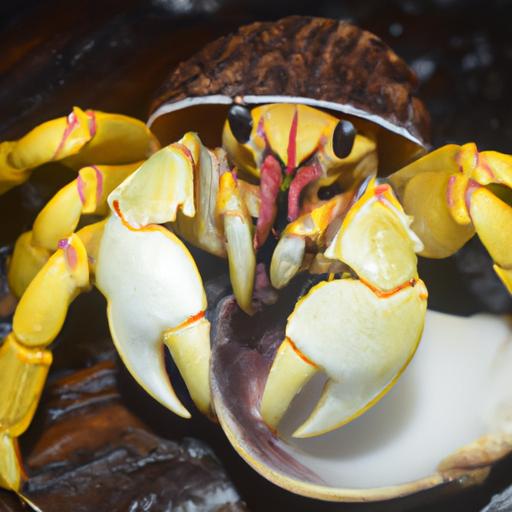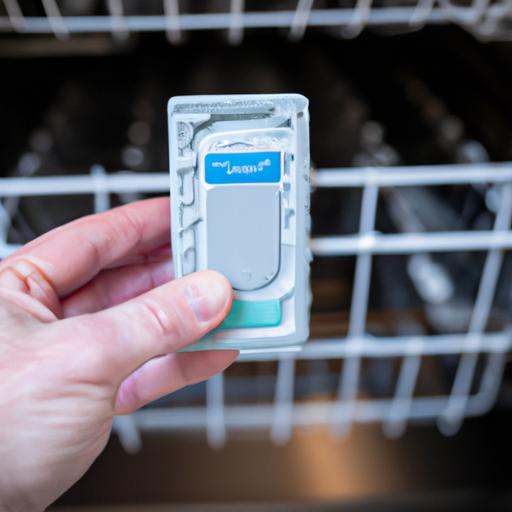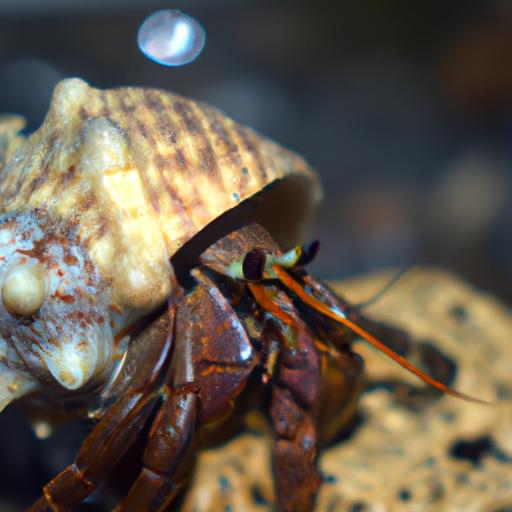How Do Hermit Crabs Drink?
Hermit crabs are fascinating creatures with their shells serving as their portable homes. But have you ever wondered how these tiny creatures quench their thirst? In this article, we’ll delve into the intriguing world of hermit crabs and explore how they drink to survive. Understanding their drinking habits is crucial for their overall well-being, whether you are a hermit crab owner or simply curious about these captivating crustaceans.
A. Discovering the World of Hermit Crabs
Hermit crabs, known for their unique habit of occupying abandoned shells, are crustaceans belonging to the superfamily Paguroidea. With around 1,100 different species, these fascinating creatures can be found in various marine and terrestrial habitats across the globe. One of the most intriguing aspects of hermit crabs is their ability to outgrow their shells, leading them to search for new ones to accommodate their growing bodies.
B. The Significance of Understanding Hermit Crab Drinking Habits
Now, you might be wondering, what makes understanding how hermit crabs drink so important? Well, water is essential for the survival of any living organism, and hermit crabs are no exception. Proper hydration plays a crucial role in maintaining their physiological functions, such as respiration, digestion, and excretion. By comprehending their drinking methods and providing suitable water sources, we can ensure their well-being, both in the wild and in captivity.
As we embark on this journey to uncover the secrets of how hermit crabs drink, let’s dive deeper into their anatomy and explore the significance of water in their lives. So, grab your metaphorical snorkel and let’s take a plunge into the fascinating world of hermit crab hydration!
Anatomy of a Hermit Crab
A. Description of a Hermit Crab’s External Features
When you encounter a hermit crab, you’ll notice their distinctive external features that make them stand out among other crustaceans. These remarkable creatures have a soft, elongated abdomen that they protect by occupying abandoned shells. Their exoskeleton, composed of chitin, provides a sturdy shield against predators and environmental factors. Additionally, hermit crabs possess ten legs, with the front pair sporting modified pincers or claws known as chelipeds. These chelipeds aid in capturing food and defending themselves.
B. Overview of a Hermit Crab’s Internal Organs and Their Functions
Beyond their captivating exterior, hermit crabs house a complex internal anatomy that enables their survival in diverse habitats. Let’s take a closer look at their internal organs and their respective functions:
-
Gills: Unlike most land-dwelling creatures, hermit crabs possess specialized gills that allow them to extract oxygen from water. These delicate feathery structures are located within their branchial chambers, which are covered and protected by the modified appendages called pereopods.
-
Digestive System: Hermit crabs have a well-developed digestive system that enables them to process the food they consume. Their mouthparts, including mandibles and maxillipeds, aid in feeding and manipulating food particles. The food then travels through their esophagus, stomach, and intestine, where nutrients are absorbed, and waste is excreted.
-
Nervous System: Hermit crabs possess a decentralized nervous system, with a collection of ganglia or nerve clusters spread throughout their bodies. This intricate network allows them to sense, react, and coordinate their movements.
-
Excretory System: To eliminate waste products, hermit crabs rely on specialized excretory organs called nephridia. These structures filter waste from their circulatory system and expel it through openings known as nephropores.
Understanding the anatomy of hermit crabs provides valuable insights into how they function and adapt to their environments. Now that we’ve explored their external features and internal organs, let’s move on to the next section to unravel the secrets of hermit crab habitats and their water sources.
Hermit Crab Habitat and Water Sources
A. Exploring the Natural Habitat of Hermit Crabs
To understand how hermit crabs drink, it is essential to delve into their natural habitat. Hermit crabs can be found in various environments, including coastal regions, coral reefs, and even tropical rainforests. These adaptable creatures have a preference for moist areas to maintain their delicate gills and prevent dehydration.
In marine habitats, hermit crabs dwell in shallow waters and intertidal zones, where they scavenge for food and seek shelter. They are commonly spotted along sandy beaches or rocky shores. In terrestrial environments, hermit crabs inhabit coastal forests or areas near freshwater sources, such as rivers or streams. Their habitat preferences vary depending on the species, but they all share a common need for access to both land and water.
B. Unveiling the Significance of Water for Hermit Crabs
Water is a vital element for hermit crabs, serving multiple crucial purposes in their lives. Firstly, it enables respiration through their modified gills, which are located within their shells. These gills extract oxygen from water, allowing hermit crabs to breathe and carry out their metabolic processes. Without access to water, their gills would dry out, hindering their ability to respire effectively.
Secondly, water plays a pivotal role in maintaining the moisture levels required for hermit crabs’ overall health. These creatures possess a soft abdomen that needs to be kept sufficiently moist to prevent desiccation. Dry conditions can be detrimental, leading to dehydration and potential harm to their delicate internal organs. Water sources provide hermit crabs with the means to hydrate themselves, ensuring their overall well-being.
Understanding the natural habitat and the importance of water for hermit crabs lays the foundation for exploring their drinking methods. In the upcoming section, we will dive into the intriguing world of how these creatures quench their thirst and ensure their survival. So, let’s continue our exploration and uncover the secrets behind hermit crab drinking habits!
Factors Affecting Hermit Crab Drinking Behavior
Hermit crabs, like any other living creatures, have their own preferences and behaviors when it comes to drinking. Several factors influence their drinking habits, and understanding these factors can help ensure their well-being in both natural and captive environments.
A. Influence of Environmental Conditions
The environmental conditions in which hermit crabs reside play a significant role in their drinking behavior. Humidity and temperature, in particular, have a direct impact on their hydration needs. Hermit crabs thrive in environments with moderate humidity levels, as excessive dryness can lead to dehydration. Similarly, extreme temperatures can affect their water requirements, as higher temperatures can accelerate water loss through evaporation.
B. Impact of Water Availability and Quality
The availability and quality of water sources greatly influence the drinking habits of hermit crabs. In their natural habitats, hermit crabs rely on various water sources such as rain, dew, and bodies of water like puddles or shallow pools. They are intuitive creatures that can detect and choose water sources based on their quality, preferring clean and uncontaminated water. In captivity, it is essential to provide fresh, chlorine-free water to mimic their natural environment and ensure their hydration.
C. Importance of Providing Proper Water Sources in Captivity
When keeping hermit crabs as pets, providing suitable water sources is crucial for their well-being. Water dishes should be shallow to prevent accidental drowning, and it is recommended to use dechlorinated water or saltwater that is specifically formulated for hermit crabs. Additionally, regular monitoring of water quality and cleanliness is necessary to maintain their health and prevent any potential diseases.
By considering these factors and providing the right conditions and water sources, we can create an environment that promotes optimal hydration for our beloved hermit crab companions. Now that we understand the influences on their drinking behavior, let’s dive into the conclusion and summarize the key points we’ve explored throughout this article.
Conclusion
In conclusion, understanding how hermit crabs drink is essential for their overall well-being. These fascinating creatures have two primary methods of obtaining water: through their gills and their modified legs. By absorbing moisture from the environment and utilizing their unique adaptations, hermit crabs ensure they stay hydrated.
The drinking habits of hermit crabs can be influenced by various factors, including environmental conditions, water availability, and quality. It is crucial to provide them with proper water sources, whether in their natural habitat or in captivity. By doing so, we can support their health and ensure they thrive.
So, the next time you observe a hermit crab in its shell, take a moment to appreciate the intricate processes that allow it to drink and survive. These small creatures teach us the importance of hydration and adaptation in the face of changing environments. Let’s continue to explore and appreciate the wonders of the natural world, one sip at a time.
Remember, hermit crabs have a lot more to teach us. Stay curious, stay amazed, and keep learning about the fascinating lives of these captivating crustaceans.




